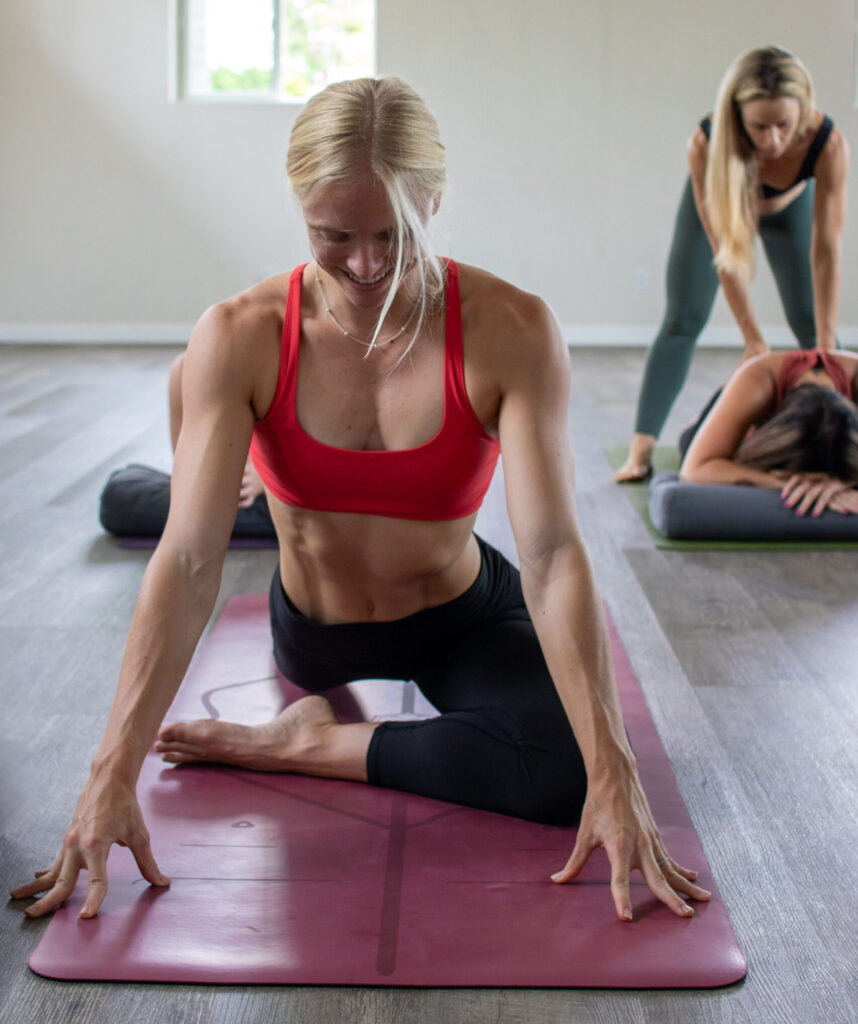Much of the yoga at studios are of the “yang” variety—vigorous, fast-paced sessions like Ashtanga and vinyasa. However, another significant technique is diametrically opposed: yin yoga.
With passive, longer-held positions, yin yoga works profoundly into our bodies. It focuses on the body’s innermost tissues, such as our connective tissues: ligaments, joints, meridians, deep fascia, and bones. In contrast, a yang yoga practice, such as Vinyasa yoga, focuses on the muscles.
Continue reading to discover everything to know about yin yoga.
What’s Yin Yoga?
Yin yoga is a more contemplative, slower-paced variant of yoga’s famous spiritual and physical practice. Its postures are held for extended periods, usually three to five minutes or more, to target connective tissues like ligaments rather than muscles. Consequently, the asanas have a more passive feel, with less muscular involvement.
Is Yin Yoga Good For You?
Yin yoga has many advantages that may help ease tension and pain, reduce anxiety and stress and enhance your well-being. For instance, holding a stance for a long time enables you to sit with and notice uncomfortable feelings, ideas, or bodily sensations as they come.
Moreover, individuals who have suffered burnout or trauma benefitted from yin yoga because it provides a safe place to reconnect with bodily sensations without being dominated. The practice allows us to feel the variety of feelings we so readily push away or conceal from ourselves. This might be due to a lack of support and time, or a desire not to deal with them.
Is Yin Yoga Good For Beginners?
Yin yoga is an excellent method to begin a yoga practice that may grow in many ways and endure for the rest of your life. Yes, novices may begin their yoga experience with yin yoga. It is kind and approachable to anyone.
Because this practice is gentler and postures are maintained for longer, it may be simpler to follow for beginners than a quicker-paced vinyasa practice. However, it may be rather intense in the body, so give yourself plenty of space and time as you get acquainted with this practice.
When To Do Yin Yoga?
It is recommended to practice yin yoga while the muscles are cold in the morning when you first awaken to get the most advantages and develop your flexibility. If the muscles are already warmed up and free, they will relieve the stretch’s stress on the deeper connective tissues.
Additionally, it may seem contradictory since your body is stiff in the morning, but this is the perfect time to have the most significant influence on the stretch traveling into the deeper levels of the body.
That’s not to imply that doing yoga at night is a poor idea. It just has different advantages.
Is Yin Yoga Hard?
Both physical and mental distraction and discomfort make yin yoga a more challenging kind of yoga. Coming to grips with your own body’s ins and outs through physical activity is one thing that many individuals find to be a worthwhile and sometimes enjoyable challenge—trying to make peace with the often-ignored, dusty, and gloomy places of your mind can seem frightening.
Still, complete rest for both body and mind depends on a state of satisfaction and tranquility that can only be attained by embracing what is inside. When you come to the mat to let go rather than work, you know that everything you need to be satisfied is already inside you.
Allow yourself to experience soreness in your body. Enable yourself to feel anxious or distracted if your mind is distracted or worried. And when you allow yourself to think, you empower yourself to heal. You recognize that your present mental state is a mental condition that may change.
Your mat is a transformational space: just as you sweat out toxins and tension from your body during exercise, you sweat out stress and worry from the mind during yin. In yang yoga, you exert effort; in yin yoga, you relax.
Conclusion
Yin yoga is excellent for individuals of all fitness levels who are health conscious and like yoga to cultivate a tranquil, contemplative practice or balance an intensive workout routine.
Slowing down, relaxing, and turning inside assist you in relieving stress and replenishing energy levels. Yin yoga also increases flexibility, increases circulation, and decreases stress.
Furthermore, if you’re new to yoga, using medications, or have any health issues, consult with a healthcare expert. If you want to learn from a trained instructor and connect with a supportive group, look for yin yoga sessions online or at a local studio.
Overtime with practice, slowing down, and stepping inside can produce several benefits.
Namaste.


